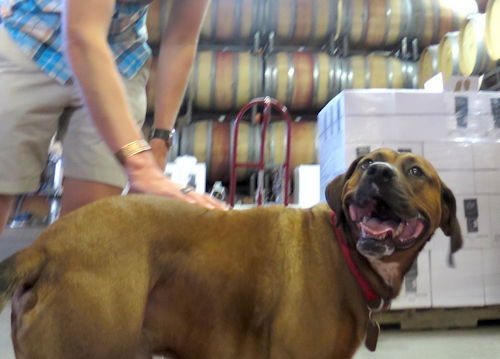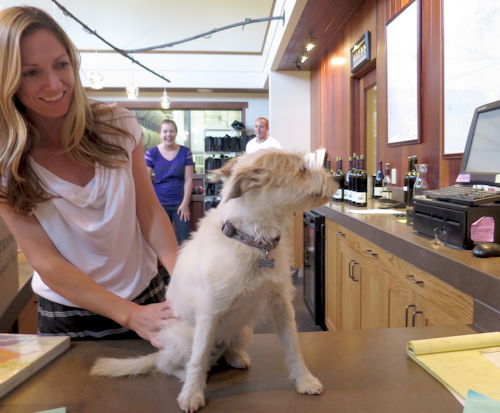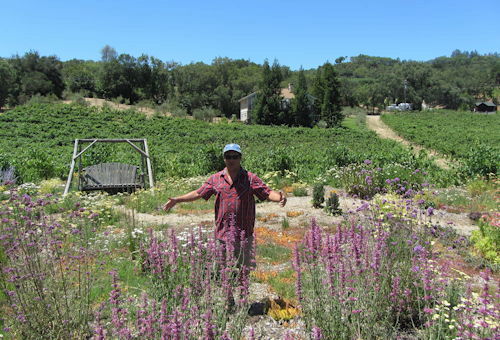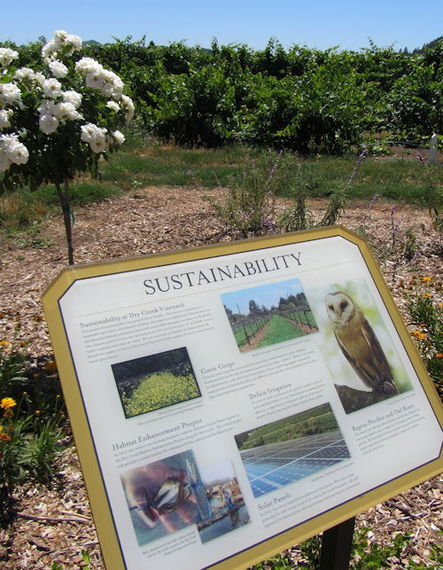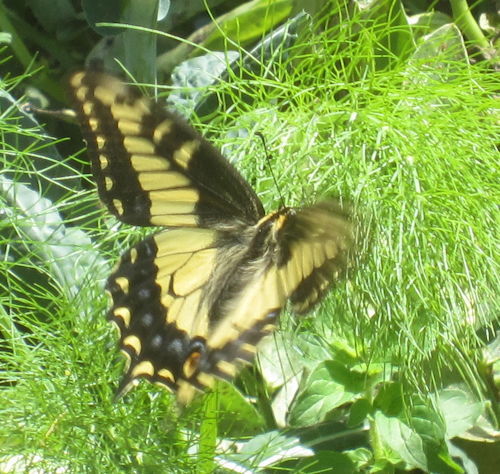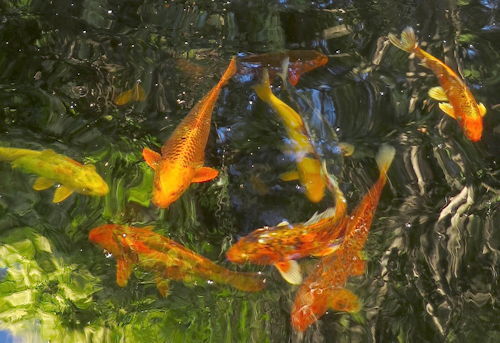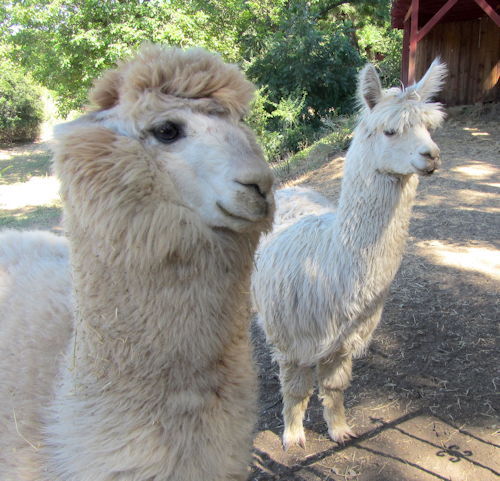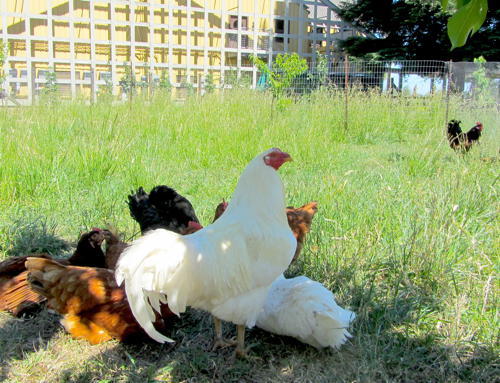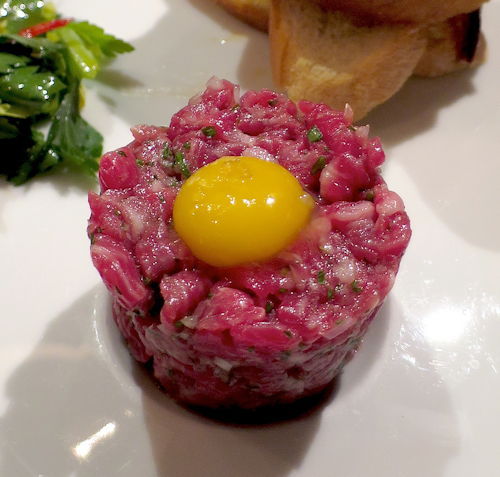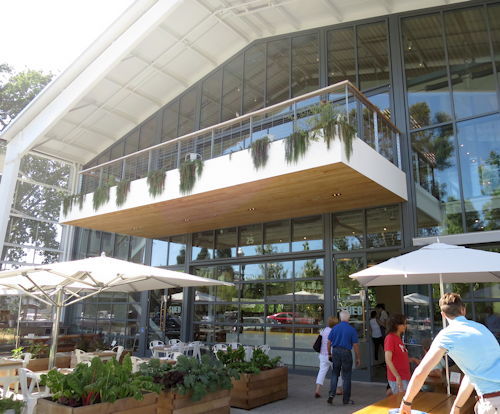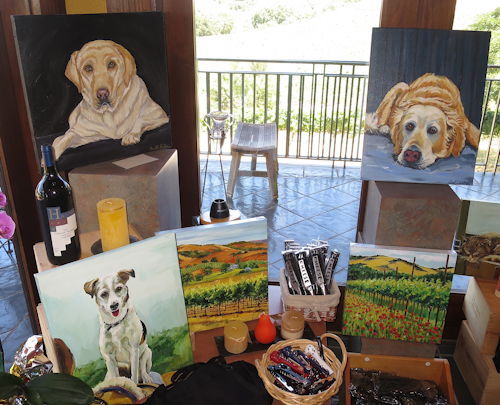What if you're lucky enough to be visiting California's Wine Country, but you don't like wine?
Because some people just don't. Nothing against wine in all its wininess, but what if you're pregnant, nursing, a recovering alcoholic, a designated driver, underage and/or prefer Squirt?
Well, every vineyard sprawling across that three-valley, sun-soaked swatch of Sonoma County known as the Wine Road is neither a shopping mall, a housing tract nor a business park. Vineyards are farms, flanked by forests, bisected by sparkling waterways. Which means: wildlife. And other animals as well. So while everyone else is doing the obvious thing and chugging the Chardonnay, why not use your Wine Country time to go all animalistically planetary and meet some non-Homo Sapiens species?
1. Winery dogs.
So many wineries have resident canines that a series of books has been written about them.
"Vineyards offer a great life for dogs," says Denise Trione of Trione Vineyards and Winery. Her big dog, Bubba, enjoys stealthily placing tennis balls between wine-tasters' legs; her small dog Scout "loves to disappear. I'll bring her to the tasting room with me and within a few seconds, she's run off to be out in the vineyards with my husband."
Dogs -- and dog-friendliness -- abide at Dutcher Crossing Winery, D'Argenzio Winery, Hook & Ladder Winery, Mercury Wine, and many more. (Another kind of dog-friendliness imbues Wine Country-based Boncora Biscotti, whose founder Bonnie Lynn Tempesta donates a portion of all sales to Sonoma no-kill shelter Pets Lifeline.)
2. Beneficial insects on Martorana Family Winery's "living roof."
"Why not skip all the chemicals and go organic?" certified organic winemaker Gio Martorana remembers asking himself. To enhance this process, he planted a "living roof" above his semi-subterranean tasting room. Bees and other beneficial insects love the yarrow, sedum and other plants that grace this fragrant patch.
Martorano, who has spotted a river otter on vineyard property and leads "Bikes & Vines & Fish" tours, is one of many wine-industry insiders devoted to lake, creek and river restoration aimed at increasing coho and steelhead salmon populations.
"I'm an avid fisherman," he says. "I'm also a little tree-hugger. So I combine farming with helping fish thrive."
3. Owl boxes.
A common sight at 185-acre Dry Creek Vineyard and other properties are large wooden birdhouses whose placement atop tall poles offer wild owls prime panoramas of the grape-pilfering rodents that plague winemakers. For the owls, that means mealtime.
4. Wildlife-spotting at Lake Sonoma.
The 8,000-acre Lake Sonoma Wildlife Area comprises foothill wilderness and, of course, a lake. Commonly seen here are deer, quail, woodpeckers, wild turkeys and a host of insects. Commonly caught in the lake are bass, perch, catfish and sunfish.
5. Fish-feeding at Honor Mansion.
Some of the most sociable, beautiful, and humongous koi you'll ever encounter inhabit a pond at the historic Honor Mansion resort, whose four acres also boast Zinfandel vines, cottages, croquet and bocce-ball courts. Sprinkle fish food into the pond or let the carp gladly eat right out of your hand.
6. The menagerie at Isis Oasis Lodge.
Part hippified hostelry, part sphinx-studded temple to ancient Egyptian deities, this Geyserville must-see is also an animal sanctuary whose menagerie includes emus, cockatoos, llamas, peacocks and an ocelot.
7. Farm animals.
They're prominent features at biodynamic vineyards, which follow strict guidelines established in the 1920s by Austrian philosopher Rudolf Steiner and entailing astrology and the burial of herb-stuffed intestines and hollow cow horns. Sheep and chickens reside at DeLoach Vineyards. Pigs and chickens reside at Quivira Vineyards.
8. Cooked and otherwise edible animals.
Hey, bratwurst happens -- at Healdsburg wiener wonderland The Wurst, whose owner Charles Bell has played bass with members of the Ted Nugent Band and cooked for England's royal family. Also in Healdsburg, executive chef Shane McAnelly concocts gourmet flesh-tastic treats such as hamachi crudo, buttermilk-fried quail, local lamb meatballs and Snake River Farms beef tartare at trendy Chalkboard Restaurant.
9. Animal-related education at SHED.
Soaring glassily over the streets of Healdsburg like a futuristic barn-cathedral hybrid, family-owned market/café/"modern grange" SHED not only houses its own mini-mill and fermentation bar, but also hosts events such as earthworm workshops and "Zen and the Art of Living With Bees," exploring "alternative beehive designs," the "life forces and natural gestalt of bees," and "cycles throughout the bee year."
10. Dog paintings at Hanna Winery & Vineyards.
You can't pet them, but Carol Walker's lush paintings of local winery dogs turn Hanna's panoramic tasting room into a gallery.
"It's funny -- so many of the other wineries have dogs that visitors who come here ask to meet our dog. But we don't have one," says Walker, who works at Hanna in the peaceful Anderson Valley. "But I've been painting nearly eight hours a day for forty years, so I started painting winery dogs.
"We don't have to feed these," Walker says.
All photographs by Kristan Lawson, used with permission.

